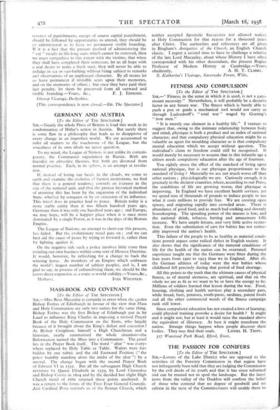MASS-BOOK AND COVENANT [To the Editor of THE SPECTATOR.] SIR, —Miss
Rose Macaulay is certainly in error when she quotes Bishop Forbes of Edinburgh in favour of the view that Mass and Holy Communion are only two names for the same thing. Bishop Forbes was the first Bishop of Edinburgh put in by Laud to influence King Charles in imposing a revised Prayer Book of the Holy Communion on the Scots, who largely because of it brought about the King's defeat and execution ! As Bishop Creighton, himself a High Churchman and a historian, neatly summarised the whole situation—the Reformation turned the Mass into a Communion. The proof lies in the Prayer Book itself. The word " altar " was every- where replaced by Holy Table or Table. Wafers were for- bidden by one rubric and the old Eastward Position (" the priest humbly standing afore the midst of the altar ") by a second. The change began with the second Prayer Book of Edward VI in 1552. But all the subsequent High Church revisions by Queen Elizabeth in 1559, by Lord Clarendon and Bishop Cosins in 1604 and by the decided but slight High Church trend of 166o retained these points unaltered. It was a return to the forms of the First Four General Councils. And Cardinal Bona reminds us of the Roman Church, which neither accepted Apostolic Succession nor allowed wafers at Holy Communion for that reason for a thousand years after Christ. The authorities and references are all given in Bingham's Antiquities of the Church, an English Church classic. I regret a second time to have to challenge a relative of the late Lord Macaulay, about whose History I have often corresponded with his other descendant, the present Regius Professor of Modern History at Cambridge.—Yours














































 Previous page
Previous page